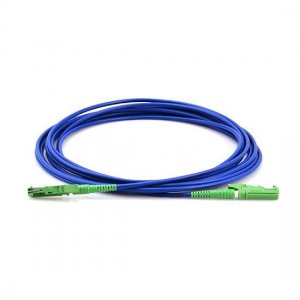
# Armored Fiber Optic Cable: A Comprehensive Guide
## Introduction to Armored Fiber Optic Cables
In today’s fast-paced digital world, reliable and durable communication infrastructure is essential. Armored fiber optic cables have emerged as a robust solution for challenging environments where standard fiber optic cables might be vulnerable to damage. These specialized cables combine the high-speed data transmission capabilities of fiber optics with enhanced physical protection.
## What is an Armored Fiber Optic Cable?
An armored fiber optic cable is a type of fiber optic cable that incorporates additional protective layers to shield the delicate glass fibers from physical damage. Unlike standard fiber cables, armored versions feature a metal or non-metallic protective layer that provides resistance against:
– Crushing forces
– Rodent attacks
– Moisture penetration
– Extreme temperatures
– Chemical exposure
## Types of Armored Fiber Optic Cables
### 1. Interlocking Armored Cables
These cables feature a corrugated steel or aluminum armor that wraps around the cable core in an interlocking pattern. The interlocking design provides excellent flexibility while maintaining superior protection.
### 2. Double Jacket Armored Cables
Double jacket armored cables combine an inner protective layer with an outer armor, offering two levels of protection. These are ideal for extremely harsh environments.
### 3. Lightweight Armored Cables
Designed for applications where weight is a concern, these cables use thinner armor materials while still providing adequate protection.
## Key Components of Armored Fiber Optic Cables
Understanding the structure of armored fiber optic cables helps in selecting the right type for specific applications:
– Optical fibers: The core transmission medium
– Buffer coating: Protects individual fibers
– Strength members: Provide tensile strength
– Armor layer: Metal or non-metallic protective layer
– Outer jacket: Additional environmental protection
## Advantages of Armored Fiber Optic Cables
### Enhanced Durability
The primary advantage of armored cables is their increased resistance to physical damage. They can withstand:
– Heavy foot traffic
– Construction equipment
– Rodent chewing
– Crushing forces from rocks or debris
### Long-Term Reliability
Armored cables maintain signal integrity even in harsh conditions, reducing maintenance costs and downtime associated with cable damage.
### Versatile Installation Options
These cables can be installed in various environments including:
– Direct burial applications
– Aerial installations
– Underground conduits
– Industrial settings
## Applications of Armored Fiber Optic Cables
### Industrial Environments
Manufacturing plants and industrial facilities benefit from armored cables that can withstand:
Keyword: armored fiber optic cable
– Chemical exposure
– High temperatures
– Mechanical stress from moving equipment
### Outdoor Deployments
Armored cables are ideal for outdoor installations where they may be exposed to:
– Extreme weather conditions
– Animal interference
– Ground movement
### Military and Government Use
Secure communications often require the extra protection that armored cables provide against:
– Physical tampering
– Electromagnetic interference
– Harsh environmental conditions
## Installation Considerations
### Proper Handling Techniques
Despite their rugged construction, armored cables still require careful handling:
– Avoid sharp bends that could stress the fibers
– Use appropriate pulling techniques to prevent damage
– Follow manufacturer’s specifications for bend radius
### Grounding Requirements
Metal-armored cables require proper grounding to:
– Prevent electrical hazards
– Reduce electromagnetic interference
– Comply with safety regulations
### Termination Methods
Specialized connectors and termination techniques are needed for armored cables to maintain their protective qualities at connection points.
## Choosing the Right Armored Fiber Optic Cable
When selecting an armored fiber optic cable, consider:
– Environmental factors (moisture, temperature, chemicals)
– Installation method (buried, aerial, conduit)
– Required bandwidth and fiber count
– Local regulations and standards
– Budget constraints
## Maintenance and Troubleshooting
### Regular Inspections
Periodic checks should include:
– Visual inspection for armor damage
– Testing for signal loss
– Checking